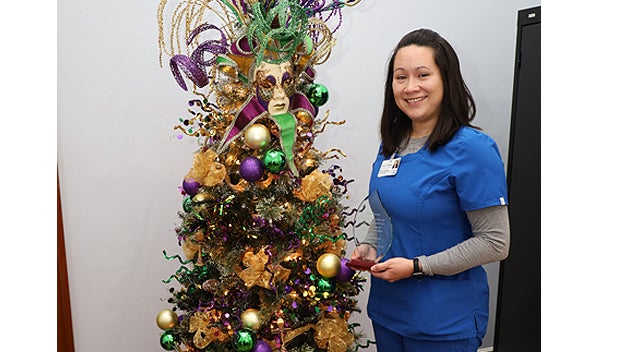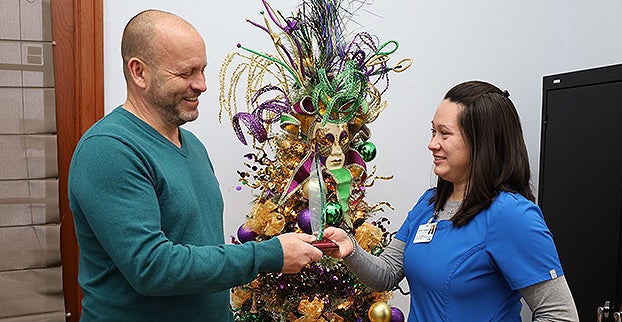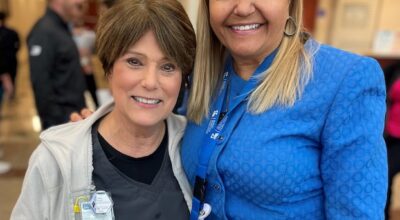Home health nurse recognized for outstanding Hurricane Ida response
Published 2:21 pm Tuesday, February 8, 2022
|
Getting your Trinity Audio player ready...
|
LAPLACE — Before running water and electricity returned to Trena Cusimano’s home in the wake of Hurricane Ida, she was out in the field, providing critical home health services to patients across the River Parishes.
Cusimano’s valiant efforts in the immediate aftermath of the storm were applauded this past week when she was surprised with a trophy from the administration of Egan-Ochsner Home Health River Parishes.
Cusimano wiped tears from her eyes as she received the award, which recognized her dedication and servant leadership.
“It’s overwhelming. I knew they needed help. I knew I wasn’t doing anything to help by staying at home, so I wanted to do what I could do,” Cusimano said.
It took about two weeks after Hurricane Ida for Egan-Ochsner River Parishes to have anything resembling a skeleton crew, according to Vice President of Operations Cliff Haydel. In the early days after the storm, Cusimano played a crucial role in delivering supplies to patients and making sure their personal needs were not overlooked.
“It’s about putting the needs of others before yourself. The agency is back to where it was pre-Ida. We’re now even stronger, and that doesn’t happen without those initial first steps,” Haydel said.
Even more impressive was the fact that Cusimano was very new to home health care at the time. While she has 12 years of experience in nursing, she joined Egan-Ochsner on August 1, 2021— just four weeks before Hurricane Ida’s devastation.
“It was baptism by fire,” Haydel said. “But the bottom line is that caring for and treating patients is the same at the hospital and at home. That’s what she knew.”
Kevin Hardy, director of Egan-Ochsner Home Health River Parishes, said Cusimano was one of his first points of contact after the storm.
“After Hurricane Ida, we didn’t know what we were going to come back to. We had all of our emergency preparedness in place, but then communications went down. Trena got in touch with me and asked what she could do,” Hardy said. “We didn’t have anyone else, and we had patients that needed to be seen.”
Cusimano reported that she had minimal damage to her home. With nothing else to do but sit and sweat in a hot house, she figured she might as well sweat out in the field. However, typical home health visits weren’t possible with so many patients without power and running water. Neighborhood streets were a hazard to drive through, lined with wind-blown debris and hundreds of downed trees.
It took a bit of improvision to meet patients’ needs under less-than-ideal circumstances.
“Most of the visits were done outside. We used a lot of portable fans,” Cusimano said.
One memory that stands out was seeing a wheelchair-bound patient unable to get into his home that had been elevated and equipped with an electric elevator.
“We did his wound care sitting in his car with chairs that we could find that weren’t damaged,” Cusimano said.
Conditions have greatly improved, but there is still much work to be done.
Nearly six months after the storm, Cusimano works with patients living in disheveled houses still under repair. Others are receiving home health services outside of the comfort of their home, crammed into tiny campers with family members.
There’s always a need for home health. Cusimano said that especially rings true for hurricane victims who run the risk of adding hardship to their lives by not prioritizing their medical needs.
“At this point, their mindset is that they have to get their house fixed to get back to normal,” Cusimano said. “A lot of them have forgotten about their health because their shelter and their basic needs have been taken.”







